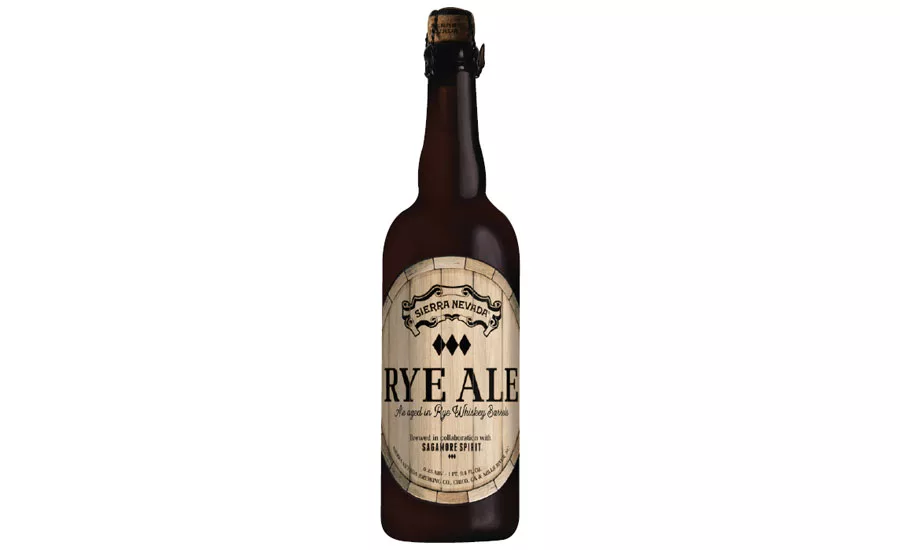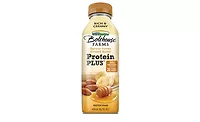Clean-label trends boosts spice usage in beverages
Millennials, Generation Z embrace flavor exploration

Sierra Nevada partnered with Sagamore Spirit for a limited-edition beer. Aged in rye whiskey barrels, Sierra Nevada Rye Ale features distinct notes from Sagamore Spirit’s signature rye whiskey, including clove, nutmeg and hints of walnut and brown sugar. (Image courtesy of Sierra Nevada Brewing Co.)
In today’s consumer packaged goods (CPG) market, better-for-you trends are impacting a broad swath of products and ultimately ingredient trends. As consumers demand cleaner and more transparent products, specific ingredient markets are seeing increased interest, helping brand owners deliver on the healthy attributes they’re striving to fulfill.
“Evolving consumer dietary requirements and trends including ‘low to no’ and ‘clean’ label have driven increased interest in spices, herbs and extract flavor solutions for beverages,” says Michael Petrone, senior beverage scientist for Hunt Valley, Md.-based McCormick & Company. “In addition to delivering flavor naturally without adding calories, they also bring a healthy halo for added consumer appeal.”
Petrone explains that flavor markets have seen the influence of clean label, and spices can help beverage-makers meet that need.
“We recognize the increased role of clean labels in beverage innovation,” he says. “While no two applications are the same, we use our FlavorReal platform of clean and natural flavor solutions to develop the right flavor for each product. Natural spice extracts are a core component of this platform and offer a clean-label solution for beverage innovation, as they deliver flavor complexity and are sourced from real food.”
Keera Perumbala, marketing associate of sweet and beverage flavors for Sensient Technologies, Hoffman Estates, Ill., details how spices historical association with at-home remedies has contributed to its recent success.
“Globally, launches in beverages with herbs and spices such as ginger or mint are increasing,” she says. “Spices, in other cultures, have historically been used as a part of herbal remedies to tackle certain medical maladies in a natural way. Consumers are now rediscovering the power that herbs and spices hold. The associated health-halo plays a big role in contributing to spices growing in categories outside of [the] traditional culinary space.”
Spices also deliver on transparency, which is another demand that is gaining steam in the CPG market. “Spices also fit the desire for transparency and story-telling when it comes to packaged food and drinks,” McCormick’s Petrone says. “Consumers are more interested than ever in understanding the sourcing of what they are eating and drinking, and they recognize that spices naturally come from plants.”
Harry Park, application technologies for Sensient Natural Ingredients, Turlock, Calif., also notes the influence that transparency is having on the spice market.
“Consumers today are seeking transparency around three key attributes when working with spices: sustainability, processing claims (i.e., USDA Organic, non-GMO) and ingredients,” he says.
Flavor exploration
Although clean-label and transparency trends are playing a role in the growth of spices in beverages, suppliers note that global flavor trends also have propelled the ingredient faction.
“Flavor exploration and global influence are two crucial drivers for increased demand for varietal chili peppers such as ancho and guajillo,” Park says. “Chili peppers such as organic ancho and organic guajillo provide a unique flavor of fruity, sweet, smoky and earthy that pairs well in beverages such as Bloody Mary, chelada, kombucha and sweet teas.”
Park adds that this demand is being driven by consumers from the younger generations. “Younger consumers, specifically Generation Zs and millennials, are very interested in unique flavor combinations such as sweet-heat and sweet-sour combinations with ethnic and exotic flavors,” he says.
To reach evolving consumer preferences, Sensient Technologies’ Perumbala notes the opportunities that spices are opening up within the beverage market.
“Spices not only create unique profiles by adding an exotic twist, but also make for interesting marketing stories,” Perumbala says. “The taste buds of the new generation of consumers are also leaning toward less sweet profiles, as their culinary adventures increase.
“With the rise in popularity of drinks such as kombucha or aquavit, spices start to play more of a character role in the beverage,” she continues. “Consumers who identify themselves as adventurous with their tastes like to try new and unique flavors that intrigue them. For such consumers, picking a ‘winter spice beer’ over regular unflavored beer is more worth their while.”
When it comes to flavor trends, consumers are moving away from sugary beverages and bitter flavors now are in the vanguard, thereby benefiting the spice market, McCormick’s Petrone says.
“Beverages such as kombucha, sipping vinegars, IPAs, switchels and bitter sodas are rising to popularity and causing consumers to become more accustomed to sour and bitter profiles,” he says. “Often, spices and botanicals play a leading role in creating these bold, bitter drinks. Beyond the healthy halo, using spices can imply a specially crafted creation because a lot of thought goes into the flavor design. Perhaps the best example of this is the complexity of developing bitters and balancing the profile in a soda or cocktail.”
Petrone further elaborates on the story-telling and innovative capabilities that spices can bring to the beverage market.
“From a story-telling perspective, spices have a rich history in cultures all around the world — for example, think of ginger and cinnamon in ancient Chinese medicine,” he explains. Spices in beverages allow consumers to experience flavors of a new culture at an easy entry point.
“Finally, developers can leverage spices to add a twist on traditional beverages,” Petrone continues. “For example, adding cardamom to a conventional vanilla latte creates a uniquely warm and spiced beverage that’s still approachable to consumers.”
A little goes a long way
Although incorporating spices can open up a lot of opportunities, experts highlight that formulators need to take several variables into consideration.
“A little bit of spice goes a long way; therefore, consider spice as a secondary or tertiary element of a flavor system,” Petrone says. “Pairing creamy, dairy or sweet profiles with spice helps cut some of their astringency or bitterness. For example, when developing a beer with spice, allow citrus to take the leading flavor role with spices like nutmeg and cinnamon as complementary profiles. Balancing a system with sweetness is the key to making drinks palatable. It should not be too bitter or too drying, with just the right boldness.”
Sensient’s Park also highlights the importance of striking the right balance when working with spices. “Balancing sweet and heat flavors in beverage applications can be challenging depending on the type of chili peppers used,” he says. “If you are looking to add heat to your beverage we suggest adding cayenne or habanero pepper at no more than 1 percent. For flavor complexity and mild-heat we suggest adding guajillo, ancho or red hatch for its mid- to low-level heat.”
Solubility also can be an issue when working with spices. “One challenge when developing beverages with ground spices is that they are not fully soluble in water and can impart color,” McCormick’s Petrone says. “Utilizing an extract or FlavorSpice, our line of natural spice and herb flavor alternatives, provides a consistent, stable and fully water-soluble way to deliver the desired profile. These formats can assure optimal dispersion in beverage applications with a ‘speck-free’ appearance. These options also achieve greater control and flexibility in flavor strength.”
Whitney Smart, technical manager of beverage flavors for Sensient Technologies, also details the stability factors that should be considered when formulating with spices.
“Adding the dry spice directly into a product can pose different challenges like micro stability, difficulty in plant product, sedimentation and filtering challenges,” she says. “Some of our customers are circumventing this processing challenge by using spice extracts to get those unique authentic profiles that are achieved by using dry ingredients, simultaneously addressing the challenges of having improved micro stability and reducing the sedimentation of the spice.” BI
Looking for a reprint of this article?
From high-res PDFs to custom plaques, order your copy today!






